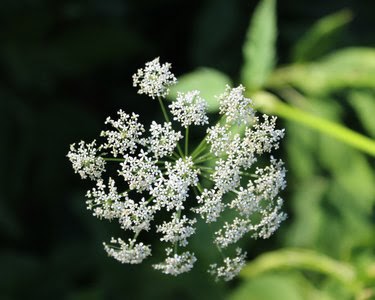Quck answer
Anise is an herb that can be easily grown in your garden. To grow anise, start by planting the seeds in well-drained soil in a sunny location. The seeds should be sown directly into the soil at a depth of about 1/4 inch. Water the seeds regularly to keep the soil moist, but not overly saturated. Anise plants require a moderate amount of water and should be watered whenever the top inch of soil feels dry. Harvest the anise seeds when they turn brown and dry. Use the seeds in cooking or for making herbal teas. Enjoy the fresh and aromatic flavor of homegrown anise!
Anise, scientifically known as Pimpinella anisum, is a delicate herbaceous plant that grows up to 2 feet in height. It produces clusters of small white flowers and loose leaves. The elongated seeds produced by the flowers are not only edible and tasty but also used to enhance the flavor of various dishes. These seeds have a distinct licorice-like taste. Anise seeds are also utilized in the production of flavoring oil.
Popular Uses of Anise
Anise is a well-liked herb that can be easily incorporated into vegetable or herb gardens. It also possesses decorative qualities. The plant is visually appealing, with its abundance of white blossoms and delicate upper leaves, making it an excellent addition to a cottage-style garden. Anise can also thrive in a container garden.
Most gardeners grow anise primarily for its flavorful seeds, which add a licorice-like taste to soups, baked goods, and spicy dishes such as curry. These seeds can be used whole or ground. Anise leaves offer a milder version of the licorice taste found in the seeds and can be chopped for use in salads. The roots of the anise plant are also edible. Anise is even used medicinally to treat stomachaches and similar digestive issues.
Instructions for Growing Anise
-
Common Name: Anise or aniseed
-
Botanical Name: Pimpinella anisum
-
When to Plant: Plant after the danger of frost has passed and when the soil temperature reaches at least 60 degrees Fahrenheit
-
USDA Zones: Grown as an annual
-
Sun Exposure: Full sun
-
Soil Type: Light, fertile, sandy soil
-
Troubleshooting: Poor drainage or overwatering can result in discolored leaves and the death of the plant
-
Signs of Thriving: Produces bushy plants with large, umbrella-shaped clusters of white flowers
Starting Anise from Seeds
Anise readily grows from seeds in warm soil, making it the most common method of propagation. It requires a long growing season of at least 120 frost-free days without extreme temperature fluctuations.
Due to their susceptibility to cold temperatures, anise plants should not be placed outdoors until after the final spring frost. Soil temperature is crucial for germination and should be at least 60 degrees Fahrenheit. When sowing seeds directly into the soil, plant them at a depth of 1/4 to 1/2 inch. Space the seeds 4 inches apart. After six weeks, thin the seedlings to one plant every 4 to 10 inches. If planting multiple rows of anise, space them 18 to 30 inches apart.
If your growing season is short, starting seeds indoors in biodegradable peat pots up to eight weeks before the average final frost date in your region is recommended. Maintain a warm environment of 60 to 72 degrees Fahrenheit for optimal germination.
Anise is native to Egypt and warm regions of southern Europe. Given its origin, it comes as no surprise that anise thrives in sunny conditions and requires at least six hours of sunlight per day. Ensure that the soil at the planting site is well-draining and rich in organic matter. Incorporating organic compost into the soil prior to planting is beneficial.
Growing Anise from a Seedling
Seedlings of anise may not be available for purchase in local garden stores or online. If you do find them, the process of transplanting is the same as transplanting seedlings from indoor peat pots.
Because anise does not like its roots to be disturbed after germination, it is best to use biodegradable pots when starting seeds indoors. After the last frost in spring, it is time to move these young seedlings outside. Space the transplants about 4 inches apart, ensuring that they are planted at the same depth as in their containers. Simply place each small pot in the soil at the correct depth and water thoroughly.
Image Credit:
Dreamer Company/iStock/GettyImages
Which Plant Hardiness Zone is Best for Anise?
Anise is an annual plant that thrives in warm seasons, but it does not like very hot weather or temperature fluctuations. This means it grows best in plant hardiness zones 4 to 9, according to the U.S. Department of Agriculture. In hotter zones, you can grow anise in a location that receives afternoon shade or in a container that can be moved to a shaded area when necessary.
When Should Anise be Planted?
Anise is a warm-weather plant and should be planted in spring because it requires approximately 120 days to mature. It grows best in climates with consistent temperatures and does not tolerate extreme heat, cold, or drastic temperature changes. This delicate herb cannot survive a hard frost.
Therefore, anise should never be planted while there is still a risk of a hard frost or freeze. Wait to sow seeds or transplant seedlings outdoors in spring until the chance of a temperature drop has passed. In certain regions, the number of days between the last spring frost and the first fall frost may not meet or exceed the 120 days required by anise. In such areas, gardeners should start the plants indoors in warm temperatures and move the seedlings outside when the cold weather has definitely passed.
Soil, Sunlight, and Water Requirements for Anise
Anise requires well-draining soil. If the soil is heavy clay or has poor drainage, the anise plant will suffer, the leaves will turn discolored, and the plant may die. Instead, anise thrives in sandy loam soil that is light but fertile and has a high organic content. Ideally, the soil should be slightly acidic with a pH of 5.5 to 6.5. A frost-free season of at least 120 days is necessary.
Anise needs sunlight to grow, with a minimum of six hours of direct sun each day. It also requires consistently moist soil, as fluctuating soil moisture levels are detrimental to the plant. This means regular watering. Young seedlings should be watered two or three times a week. Once the plants reach a height of 6 to 8 inches, watering can be reduced to once a week.
How to Propagate Anise
If you purchase anise seeds in the first year to get started, you can avoid doing so in future years by saving the seeds. Simply save enough seeds at harvest to use for next year’s crop. Allow them to dry before planting.
How to Prepare Anise for Winter
Anise is an annual plant and will not survive a cold winter. Therefore, there is no need to prepare anise for winter. However, you can store anise seeds in a dry location for the winter and plant them again in spring.

Image Credit:
Steve Williams / EyeEm/EyeEm/GettyImages
How to Harvest Anise
When anise plants have gone to seed and the seeds start to turn gray and easily detach from the plant, it is time to harvest them. This usually occurs in August or September, and you can estimate the timing by counting 120 days from the day the seeds were sown.
Harvesting ripe anise seeds is not difficult, but it can be complicated by the fact that the umbels ripen at different times, with some seeds ripening earlier within each umbel and others ripening later. Commercial anise growers often pull out the plants early and arrange them in a cone shape with the seed heads in the center. This allows them to continue ripening. When the seeds are fully mature, they easily separate from the plant.
If you only have a few plants, it is easier to use a handheld garden pruner to cut off the top of the plants. Then, tie the anise plants into bundles and store them in a warm, well-ventilated area that receives indirect sunlight. Let the seeds dry out. Once they are dry, rub the flowerheads between your hands to separate the seeds. Alternatively, you can attach paper bags to the tops of the anise flowers to catch the seeds as they dry and fall off. After harvesting, store the seeds in a cool, dark place in an airtight container.
Common Pests and Other Problems for Anise
Anise is an annual herb that is not frequently attacked by pests. However, there are a few common pests that may appear on your anise plants. These pests are not specific to anise but can be found on various flowers and herbs in your garden, including anise.
Aphids are small bugs with soft, pear-shaped bodies. They are usually green or yellow and are often found in large groups on the undersides of anise leaves and sometimes on the stems. While one or two aphids may not cause much damage, an infestation can distort the leaves and turn them yellow.
Aphids have special mouthparts that they use to suck plant juices. They also excrete a sugary liquid called honeydew onto the plant, which attracts other insects like ants and promotes the growth of mold. To get rid of aphids, you can use a strong stream of water from a garden hose.
If you notice holes in your anise foliage, your plants may be under attack by armyworms. These are the larval stage of moths that lay clusters of up to 150 eggs on plant leaves. The resulting larvae feed on leaves and grasses. To eliminate these pests, you can purchase parasitic wasps, flies, or ground beetles from a garden store, as they are natural enemies of armyworms. Another option is to use pheromone traps to attract and capture the moths before they lay eggs.
If your anise plants are cut off at the soil line, they may be infested with cutworms. These pests live in the soil and overwinter there, attacking new plants in the spring. The best defense against cutworms is to maintain a clean garden by removing all plant debris from the soil after harvest. You can also sprinkle diatomaceous earth around the base of the plants.
Typical Diseases Affecting Anise Plants
There are two distinct types of diseases that can affect anise plants, both referred to as “mildew,” but they are unrelated.
Downy mildew is caused by parasitic organisms that are similar to algae. This particular mildew requires moisture to survive and spread. It manifests as yellow spots on the upper surfaces of young and delicate leaves, along with a white, fluffy growth on the underside. The disease occurs when anise leaves remain wet for an extended period of time. To effectively manage downy mildew, it is advisable to water the plants in the morning rather than in the evening, and to always water at the base of the plants. Additionally, it is important to space the plants apart to allow for proper air circulation.
Powdery mildew, on the other hand, is caused by a true fungus and results in a powdery growth on the leaves of anise plants. In severe cases, it can even lead to deformed flowers. To combat powdery mildew, it is recommended to avoid excessive fertilization of the plant and to ensure adequate spacing between plants to encourage airflow.


